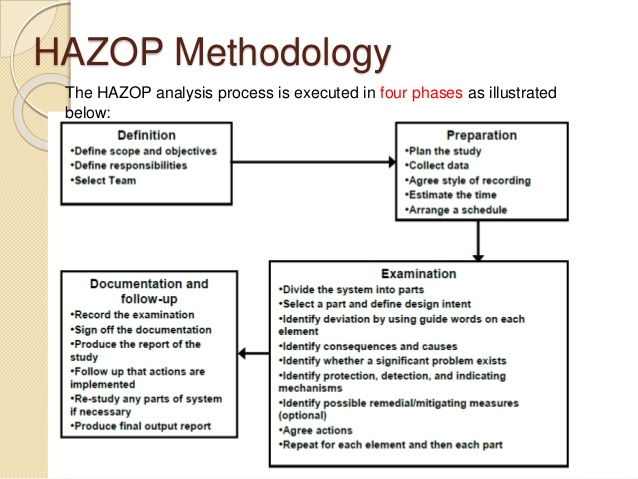HAZOP (Hazard and Operability)
HAZOP (Hazard and Operability) is a structured qualitative risk management technique evolved in the 1990s.
It was initially developed to analyze chemical processes & systems but over a period of time has been extended to other systems, complex operations and to software systems too. It is a team driven process and is designed to make accidents happen in the imagination to visualize the ways in which a plant can malfunction. It is based on the theory that failures occur due to deviations in design and malfunctioning of the systems. Simulation of these deviations is guided by a set of “Guide words” to identify the potential failures and evaluate the checks and balances in place as defeating factors for the deviations. The results of the study is typically documented in a worksheet like the Microsoft Excel workbook or in any application software that has a capability to create tabulated forms.
The methodology is described in detail within The International Standard IEC 61882 Hazard and Operability Studies (HAZOP) – Application Guide.


